|
|||
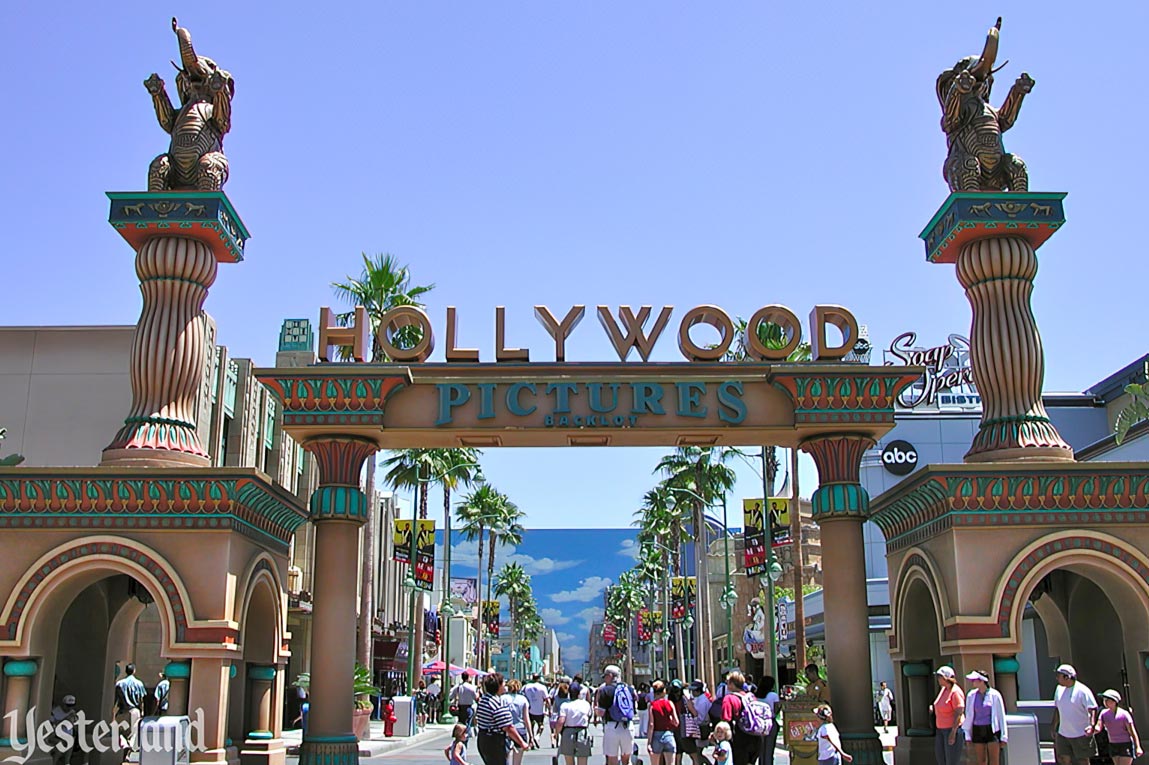
Photo by Werner Weiss, 2002 |
|||
|
A pair of pachyderms is precariously perched atop pillars on polychromatic pedestals. Passages for pedestrians perforate the pedestals. The portal promises production of pictures. |
|||
|
|
|||
|
It’s a spectacular way to mark the entrance to the Hollywood Pictures Backlot—the land of Superstar Limo, the ABC Soap Opera Bistro, and The Power of Blast! In fact, it’s a Hollywood Spectacular. |
|||
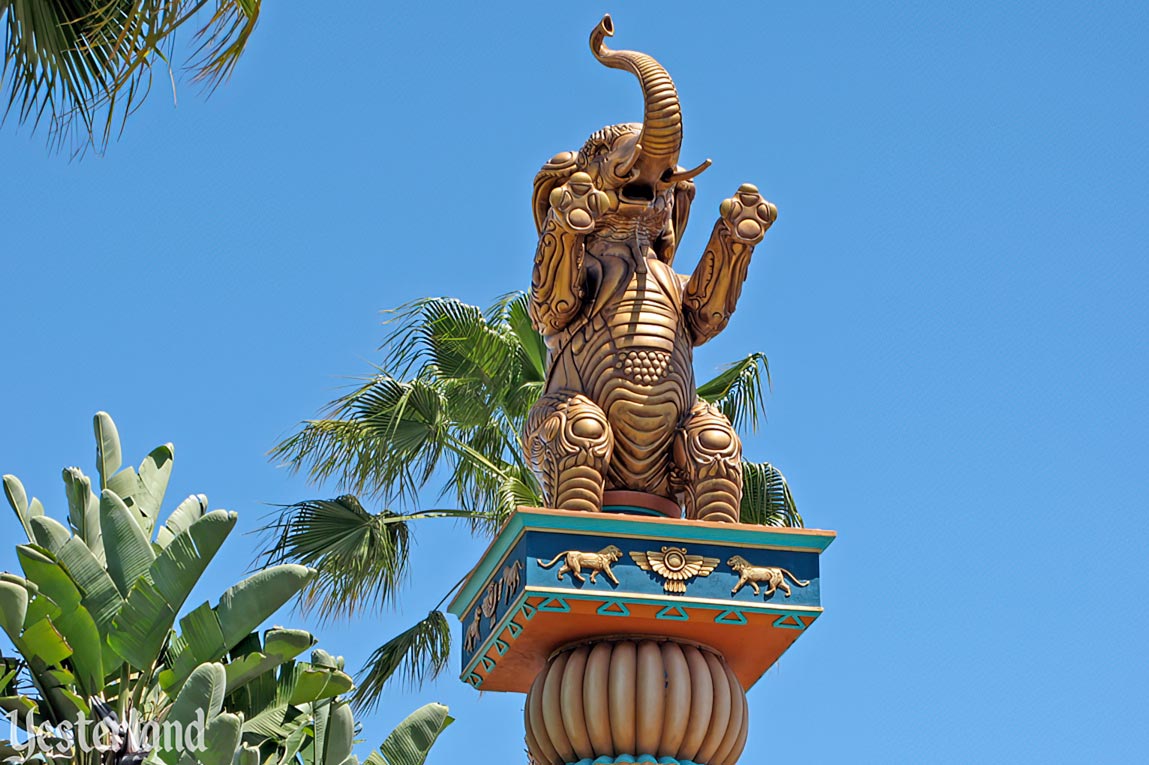
Photo by Werner Weiss, 2010 Bronzed body |
|||
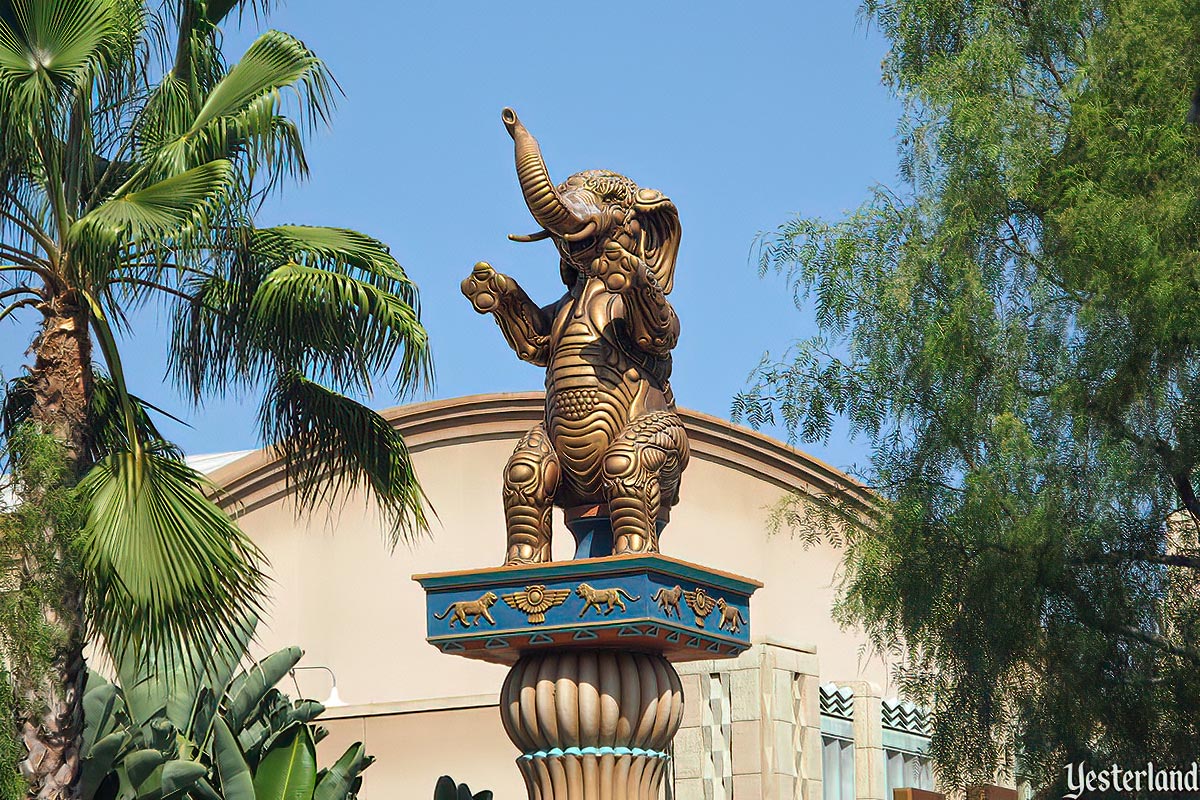
Photo by Werner Weiss, 2009 Trunk show |
|||
|
These aren’t ordinary elephants with gray, wrinkled hides. Their bronze bodies are covered with ornamental patterns. It looks a bit as if the elephants have been skinned, exposing their muscles and innards—but a closer look reveals that’s not the case. |
|||
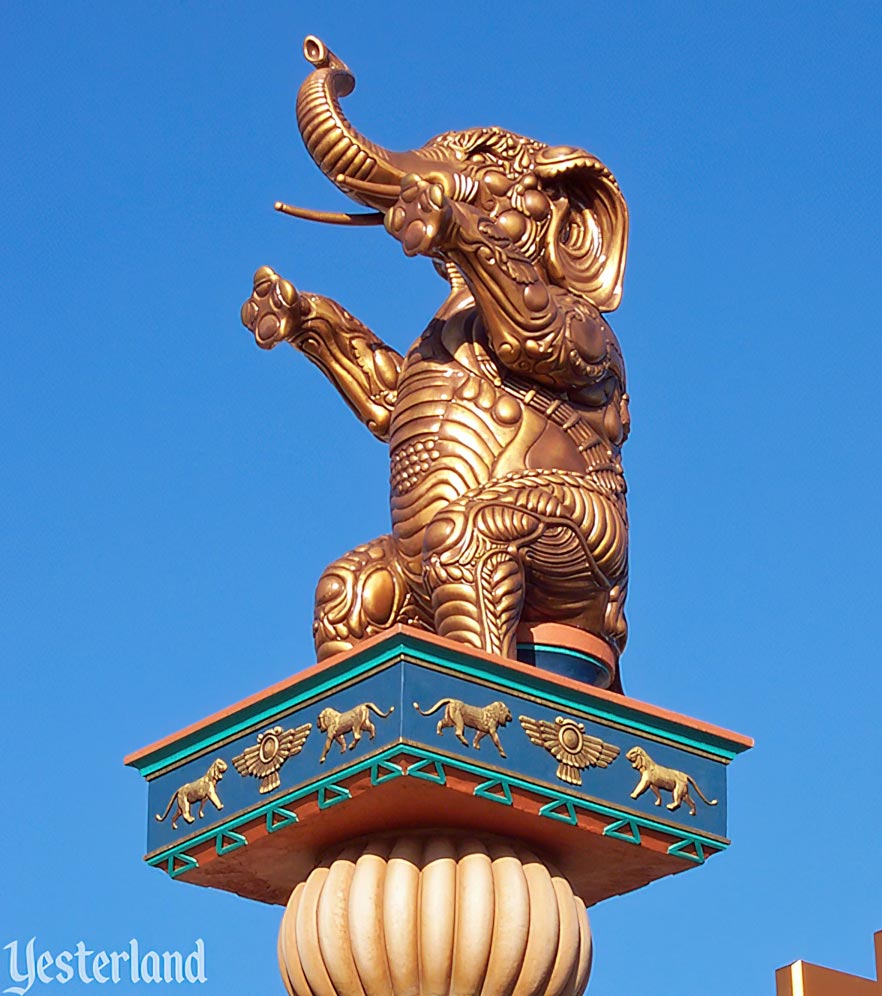
Photo by Tony “WisebearAZ” Moore, 2001 “All right, Mr. DeMille; I’m ready for my close-up.” |
|||
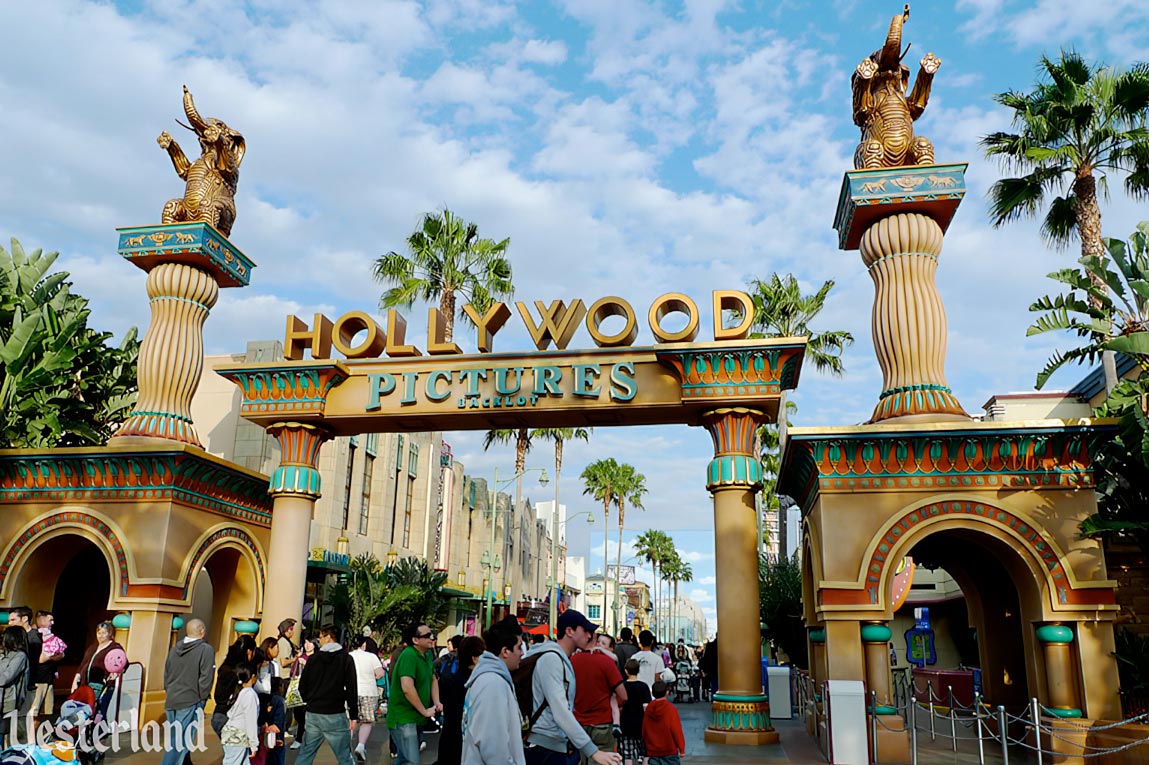
Photo by Allen Huffman, 2009 Painted sky at the other end of the street |
|||
|
You might think that the other side of the portal would feel like a real, working movie studio. Alas, it feels like you’re on a street in Hollywood—until you realize that some of the façades are false fronts because this is supposed to be a movie backlot. Clever, eh? When the clouds and the color of the sky are just right, the building with the painted sky at the other end of the street from the portal almost blends into the real sky. |
|||
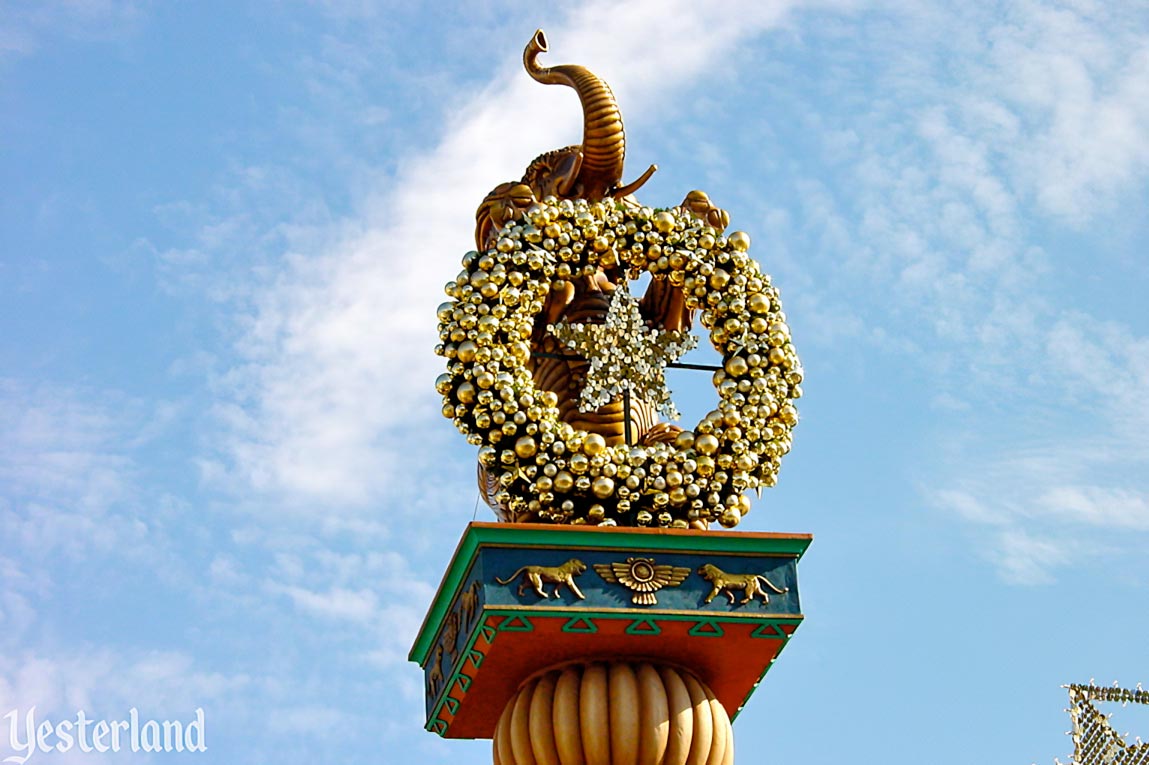
Photo by Allen Huffman, 2001 Proboscine wreath holder |
|||
|
During the Holiday Season, the elephants perform a useful service. They hold golden Christmas wreaths. |
|||
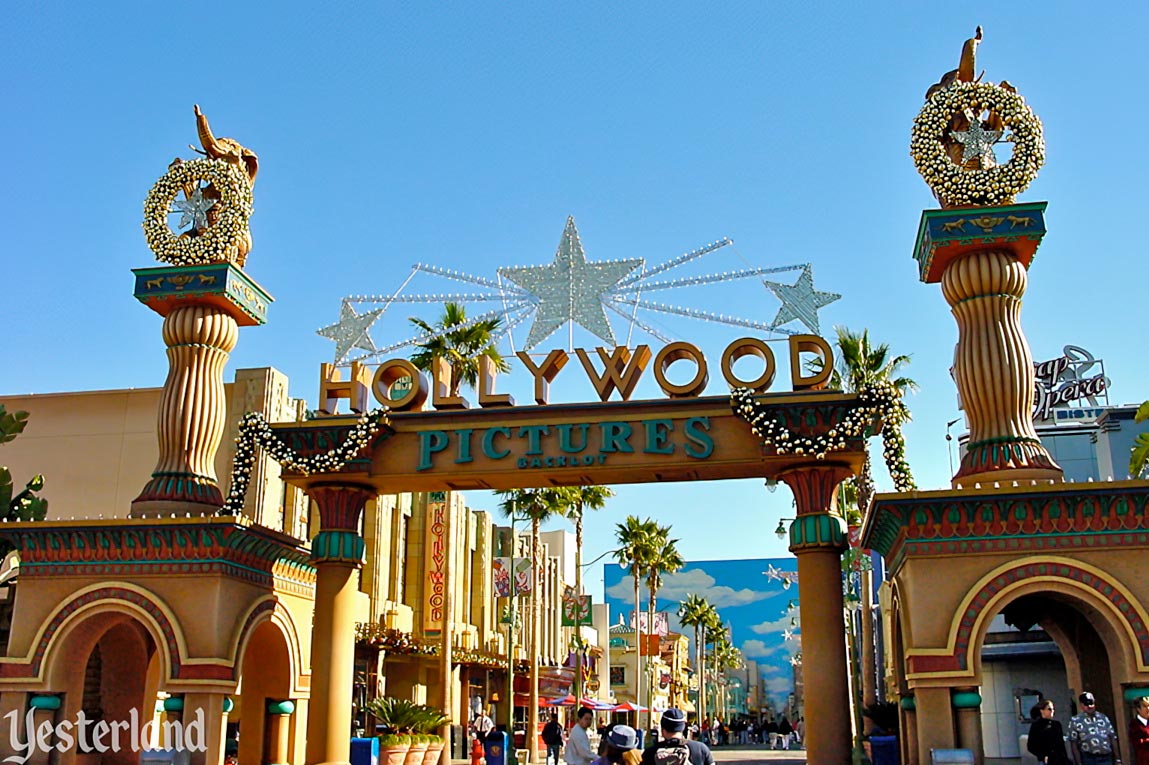
Photo by Allen Huffman, 2001 Portal with stars |
|||
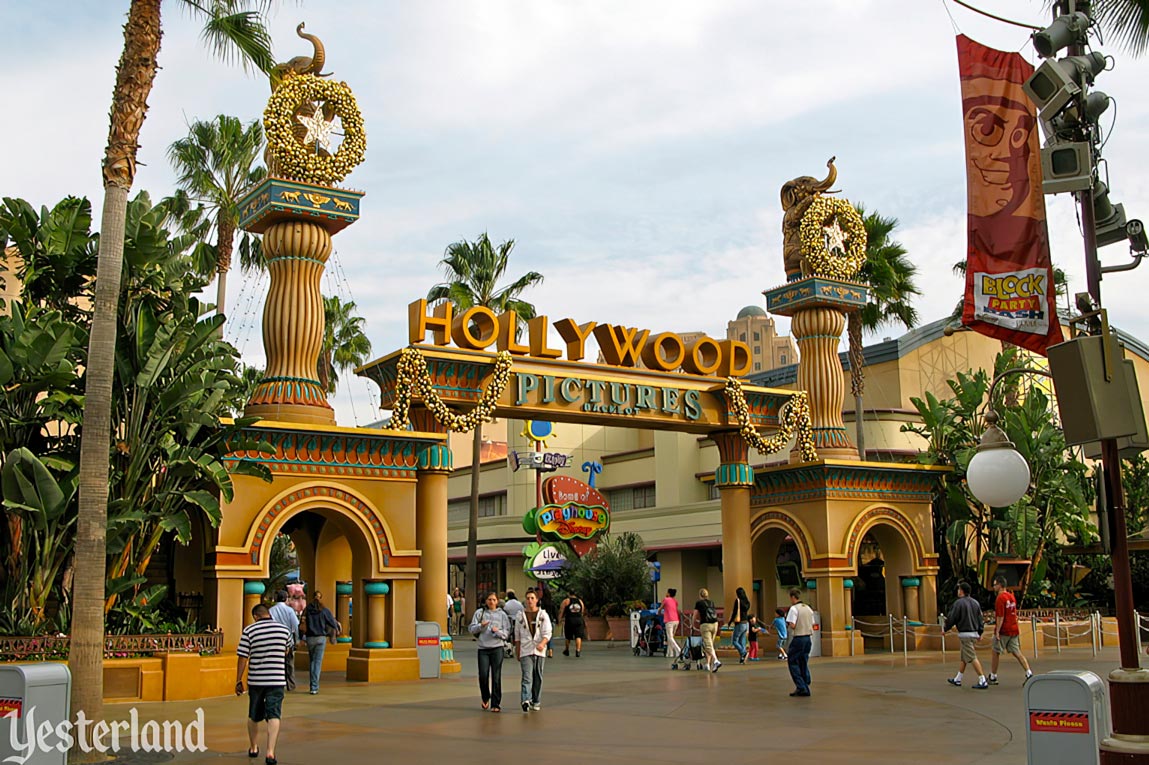
Photo by Werner Weiss, 2007 Portal without stars |
|||
|
Hurray for Elephants! |
|||
|
|
|||
|
The Hollywood Pictures Backlot portal, flanked by elaborately perched elephants, was part of Disney’s California Adventure when the park opened in February 2001. The portal marked the transition from Sunshine Plaza to the Hollywood Pictures Backlot. |
|||
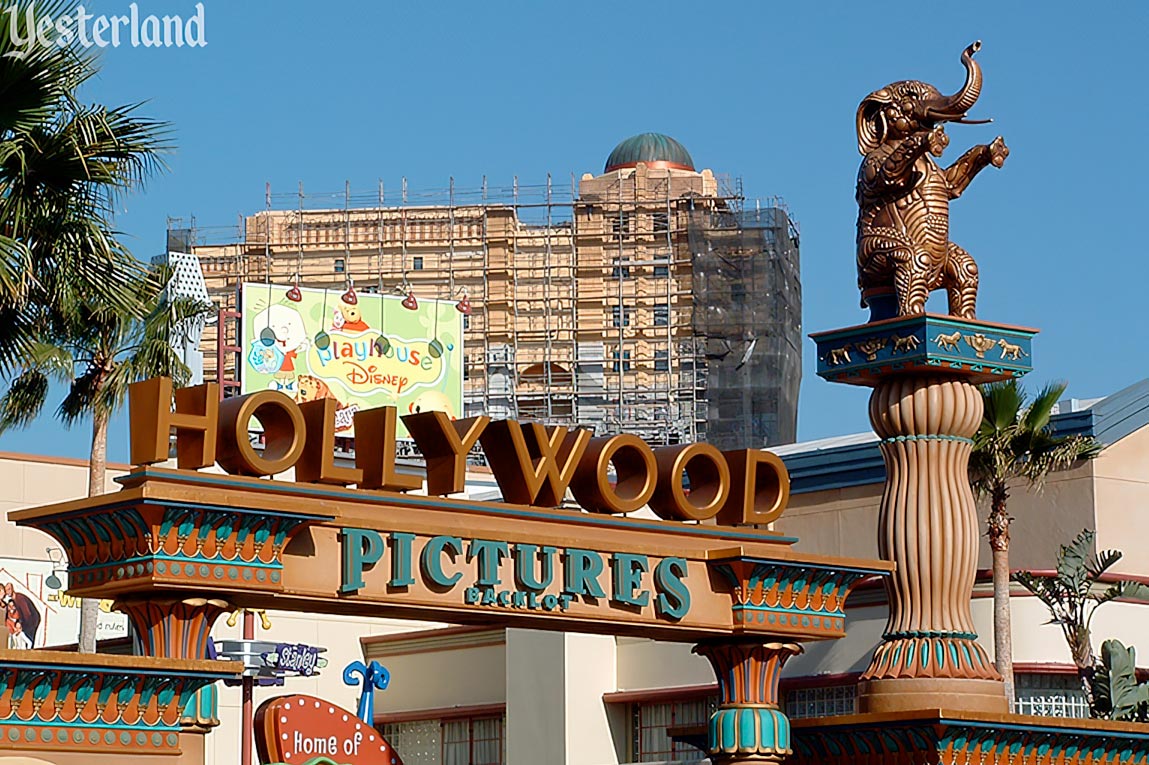
Photo by Tony “WisebearAZ” Moore, 2003 During the construction of The Twilight Zone Tower of Terror in 2003 |
|||
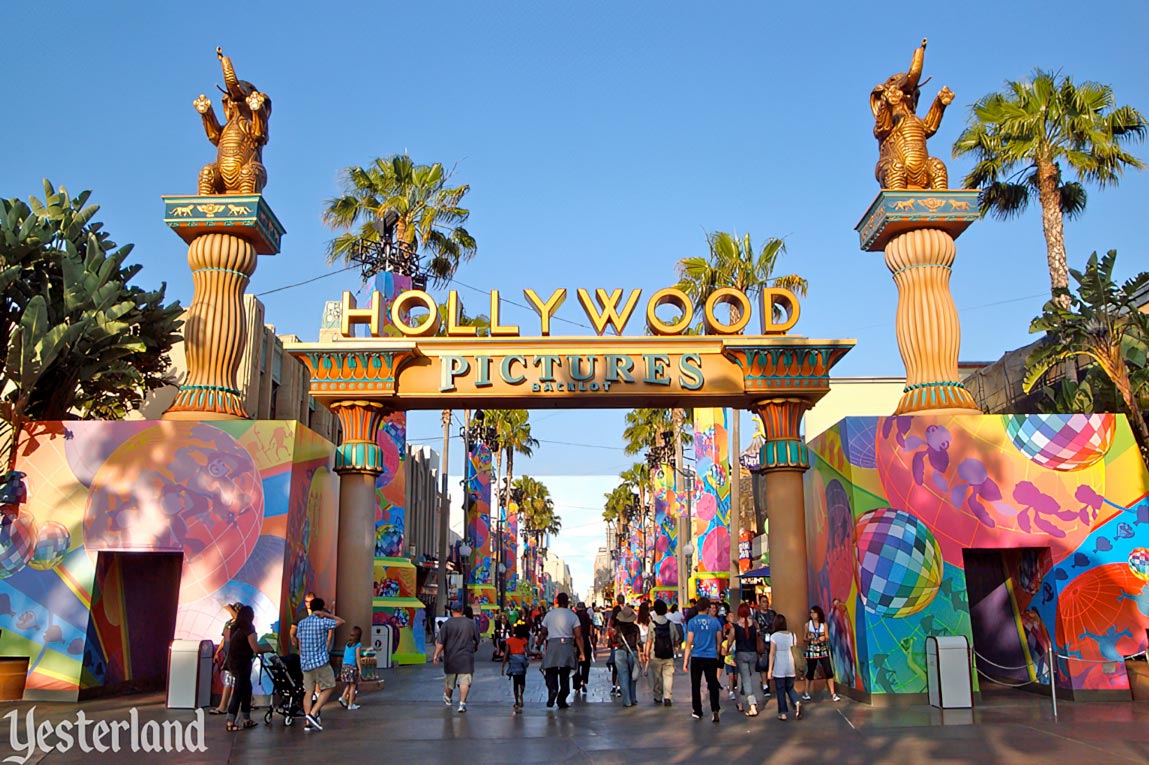
Photo by Chris Bales, 2010 During Glow Fest in 2010 |
|||
|
The conceit behind the Hollywood Pictures Backlot was that it would first appear to be a city street in the Golden Age of Hollywood, but would turn out to be a Hollywood stage set as guests proceeded down the street. Thus, the portal—complete with mighty elephant statues—was legitimately the entrance to a studio backlot. The design wasn’t convincing as a movie backlot. |
|||
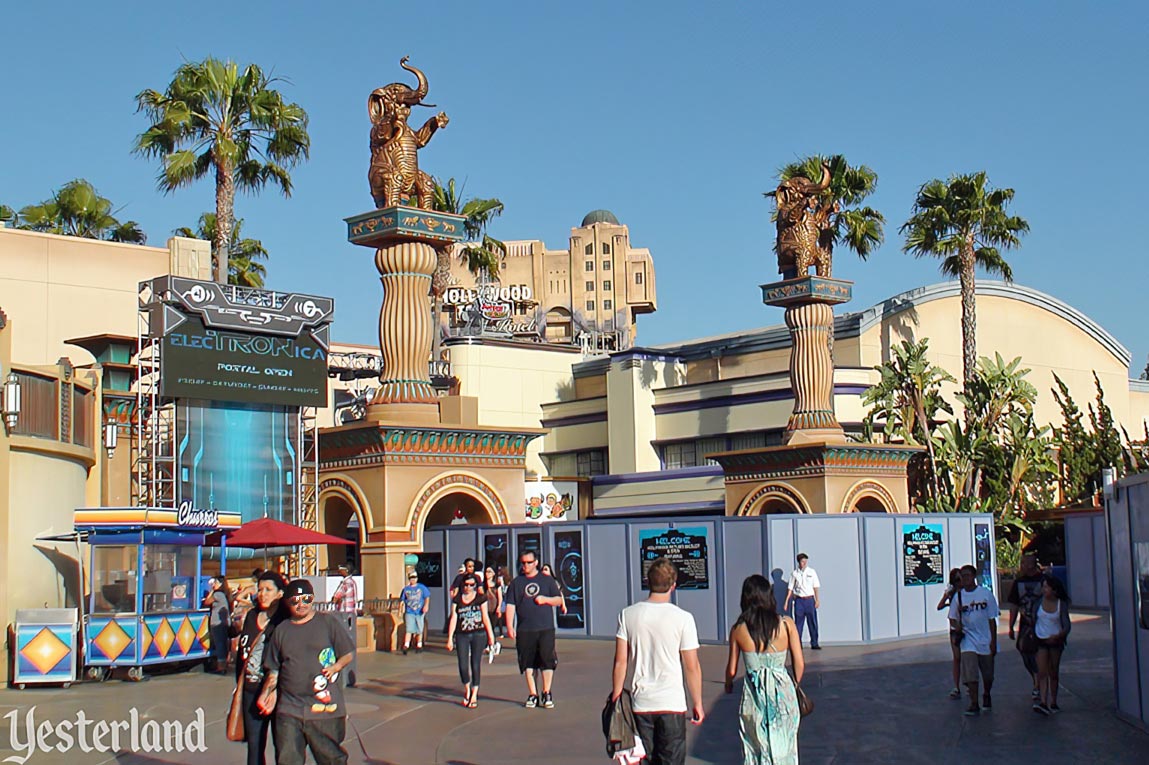
Photo by Chris Bales, 2011 After the removal of the Hollywood Pictures Backlot portal, but before the removal of the elephants |
|||
|
On April 12, 2011, the Hollywood Pictures Backlot sign and its supporting columns were removed permanently. Almost exactly a year later, on April 11, 2012, the elephants and their pillars were removed too. But the pedestals remained. And they’re still there today, just with a new paint scheme. |
|||
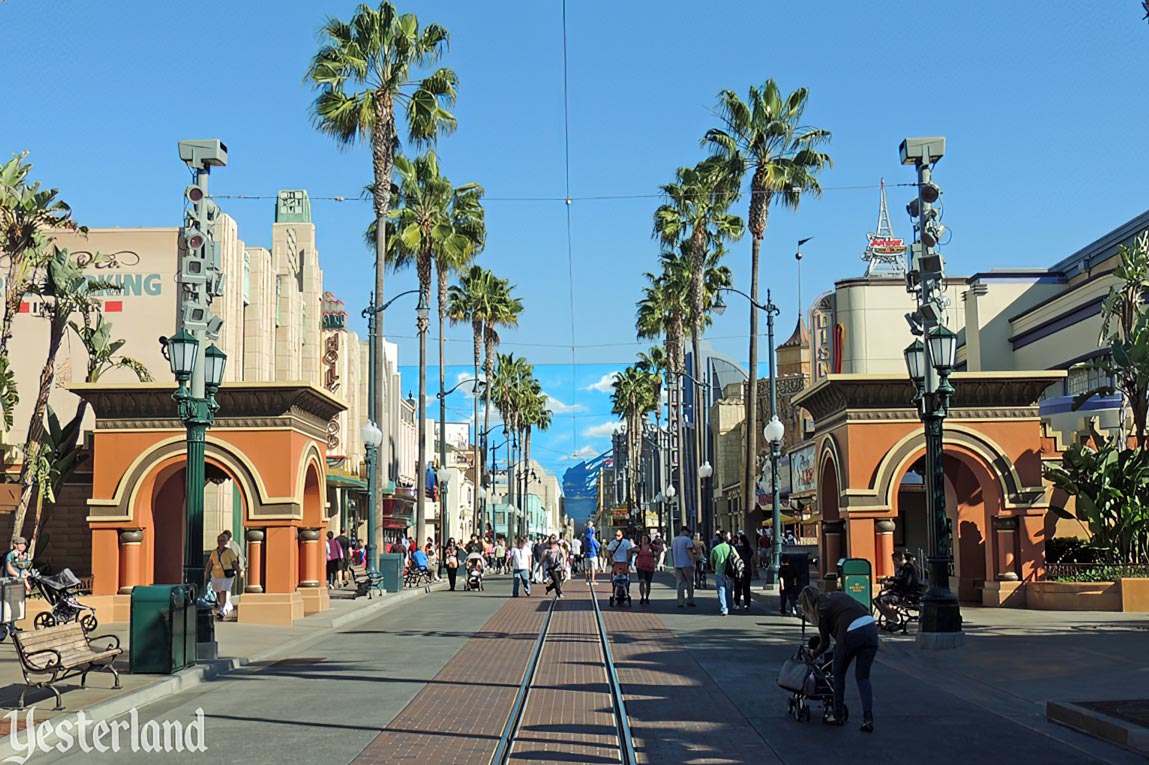
Photo by Werner Weiss, 2013 Former elephant pedestals |
|||
|
The Hollywood Pictures Backlot became Hollywood Land. The pedestals look a bit forlorn now, and it’s odd to have such structures sitting in the middle of the sidewalk. But the pedestals provide a transition between Buena Vista Street and Hollywood Land. |
|||
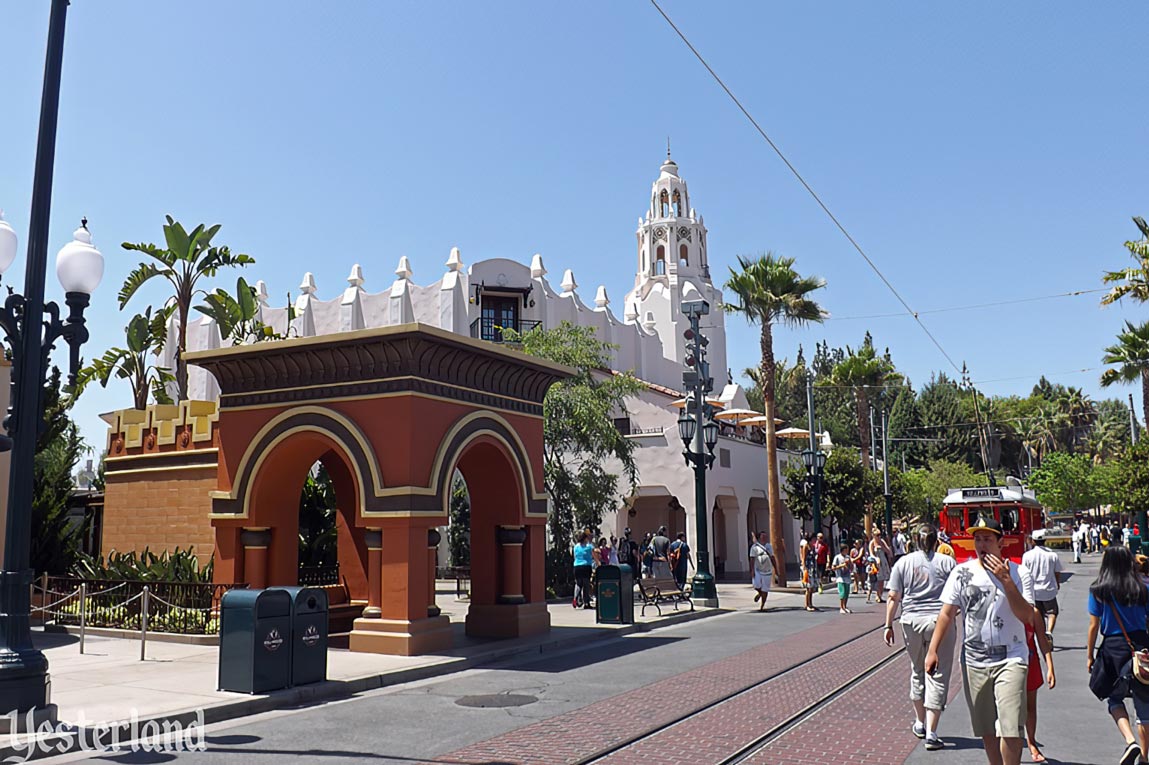
Photo by Chris Bales, 2012 Pedestal with the Carthay Circle Theatre |
|||
|
Just seven months after the opening of Disney’s California Adventere, Hollywood & Highland Center opened in Hollywood at the intersection of—where else?—Hollywood Blvd. and Highland Ave. The shopping complex, which was also home to the Kodak Theatre (now Dolby Theatre) and a hotel, had its own mighty elephants atop columns shaped like those at Disney’s California Adventure, but much larger. The Hollywood version used black and white and shades of gray, while the Disney version was in color. |
|||
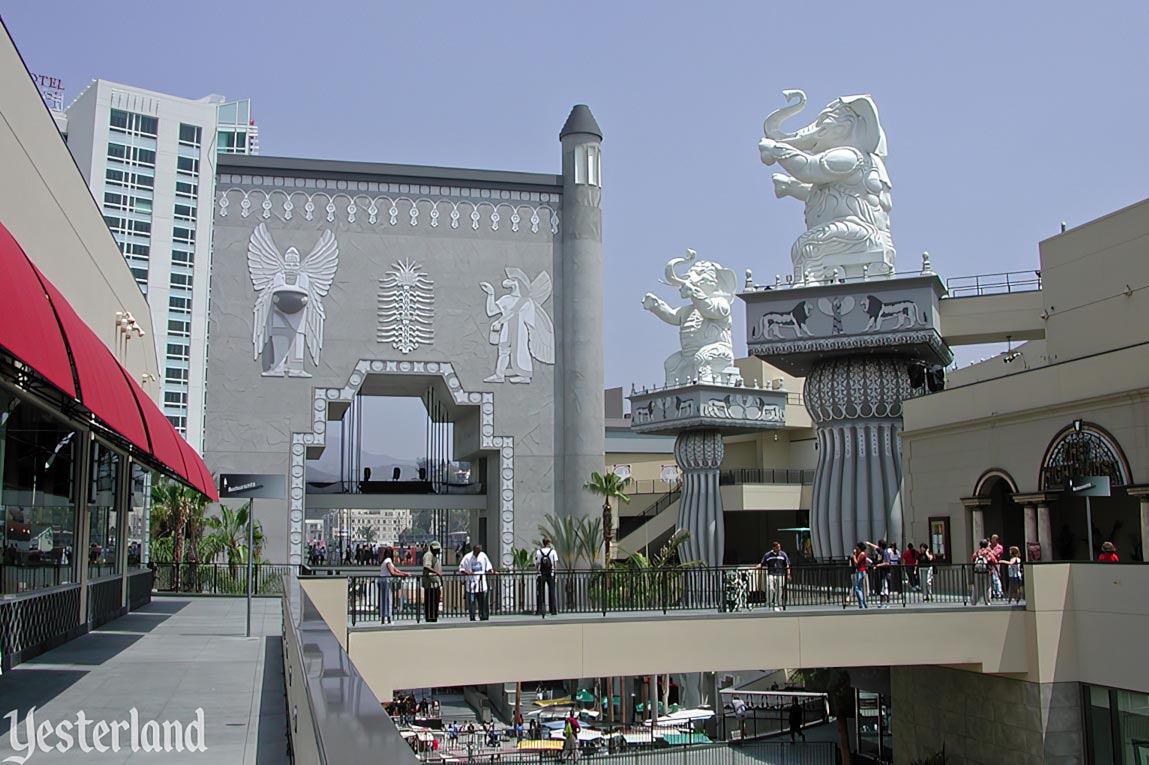
Photo by Werner Weiss, 2002 Hollywood & Highland Center |
|||
|
So what’s the connection between giant sitting elephants and Hollywood? |
|||
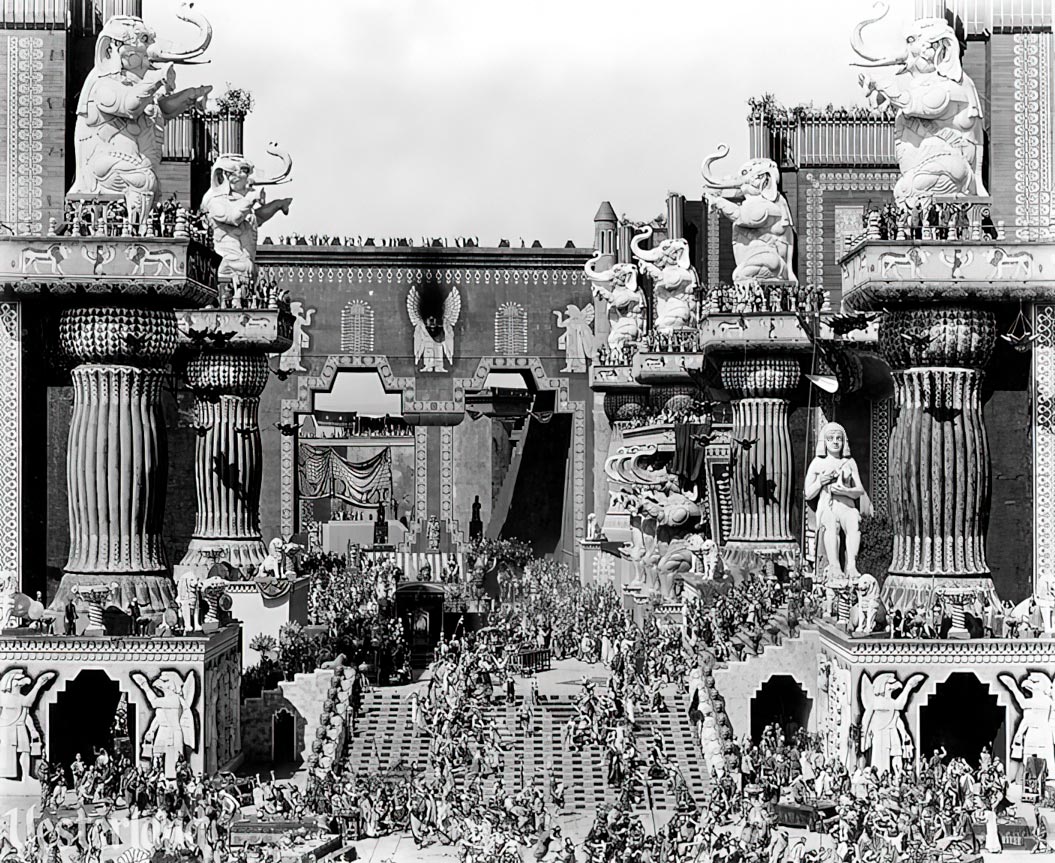
Still from Intolerance by D. W. Griffith, 1916. Public domain. Babylon, as depicted in D. W. Griffith’s Intolerance |
|||
|
The answer lies with Intolerance, the 1916 silent Hollywood spectacular by D. W. Griffith. One of the four parallel stories in the three-and-one-half-hour epic dealt with the fall of Babylon to Persia in 539 B.C. For the scenes of ancient Babylon, Griffith built one of the largest exterior sets for a single movie in the history of motion pictures. The enormous set was at the corner of Hollywood and Sunset, around five miles northwest of downtown Los Angeles. More than 3,000 extras populated the Babylon scenes. The high-budget movie bankrupted Griffith’s company. For several years, the Intolerance set, clearly visible from the street, deteriorated until it was demolished in 1919. |
|||
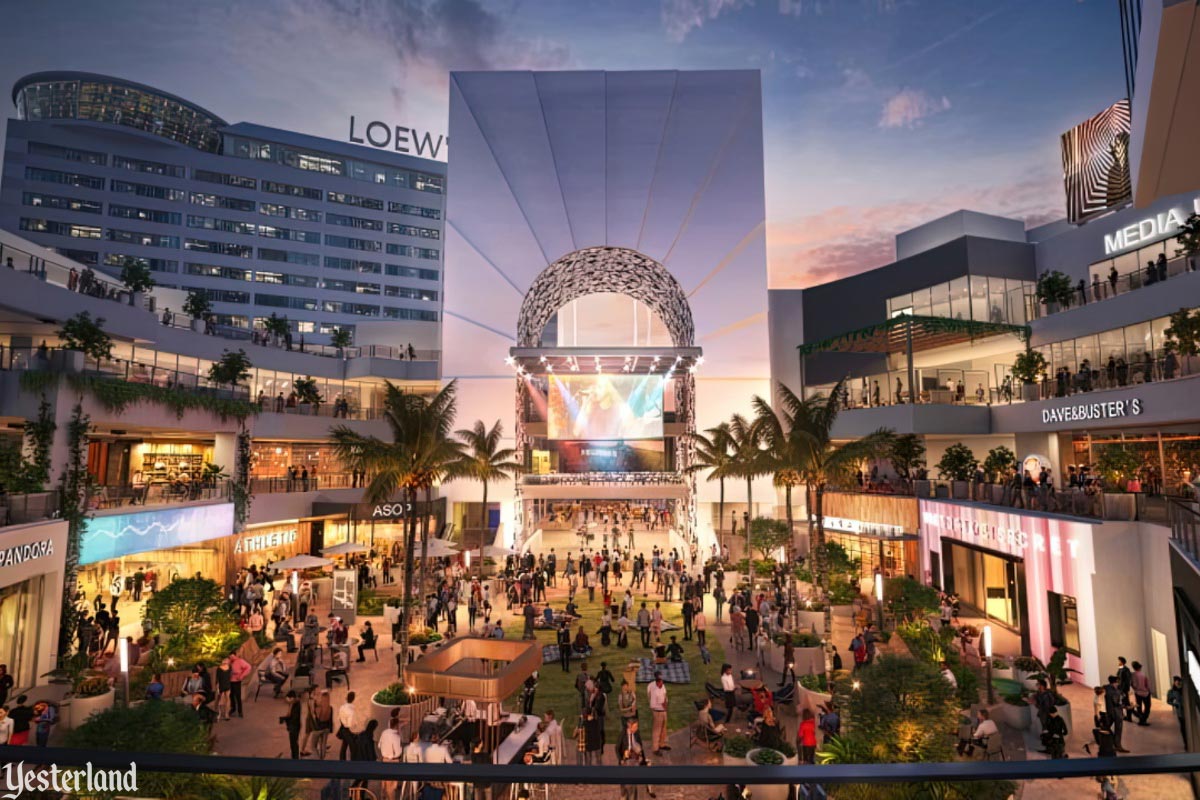
Rendering from Gaw Capital USA and DJM, 2020 Concept rendering for Ovation Hollywood, formerly Hollywood & Highland |
|||
|
As part of a $100 million makeover to give Hollywood & Highland a more contemporary look and a new name, its elephants came down in July 2021. A Los Angeles Times article by Roger Vincent on July 31, 2021 included this reason: “Griffith, the son of a Confederate army colonel, directed the blockbuster 1915 film The Birth of a Nation, which lionized the Ku Klux Klan and was condemned at the time as ‘three miles of filth’ by the NAACP. His follow-up film, Intolerance, is often considered to be Griffith’s response to criticism of The Birth of a Nation.” Although the elephants were not from The Birth of a Nation, they had become an unacceptable reminder of D.W. Griffith’s racist legacy—and they certainly didn’t look contemporary. |
|||
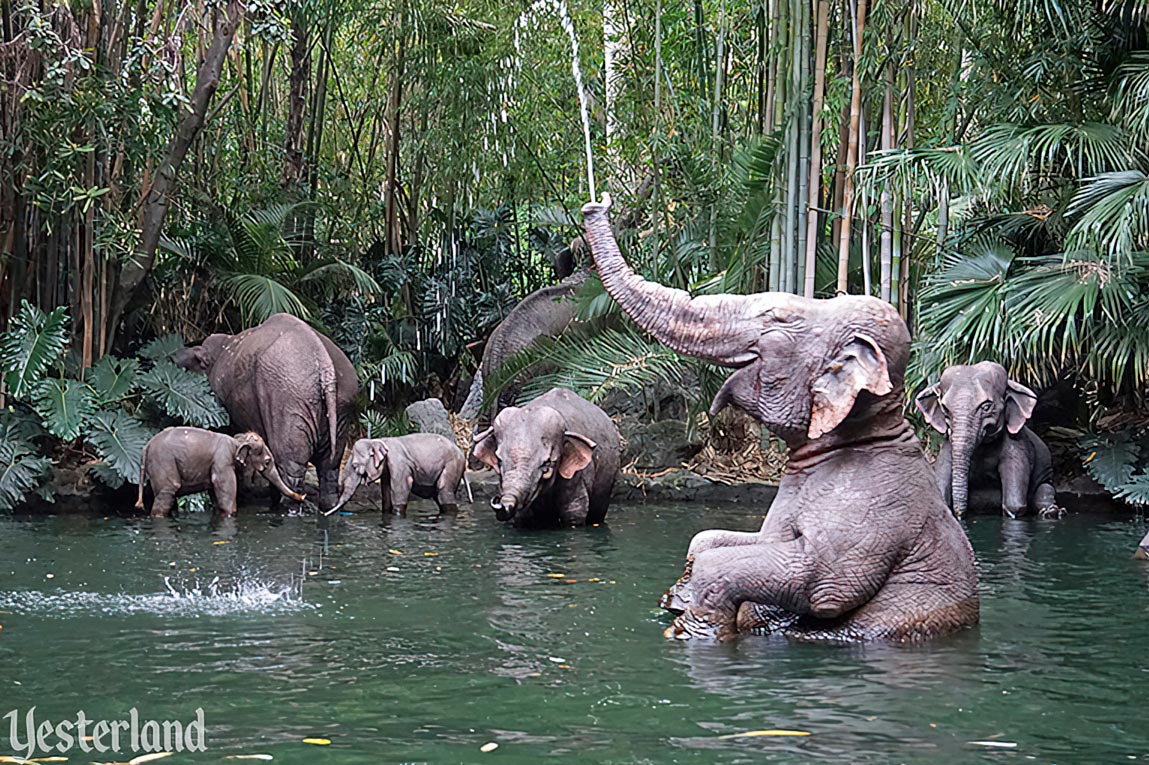
Photo by Werner Weiss, 2017 Elephants at Disneyland |
|||
|
If you miss the elephants at Disney California Adventure, there’s another place nearby to visit elephants. Head over to Disneyland’s Jungle Cruise and its Indian Elephant Bathing Pool. |
|||
|
|
Click here to post comments at MiceChat about this article.
© 2022 Werner Weiss — Disclaimers, Copyright, and Trademarks Updated November 11, 2022 |
||
